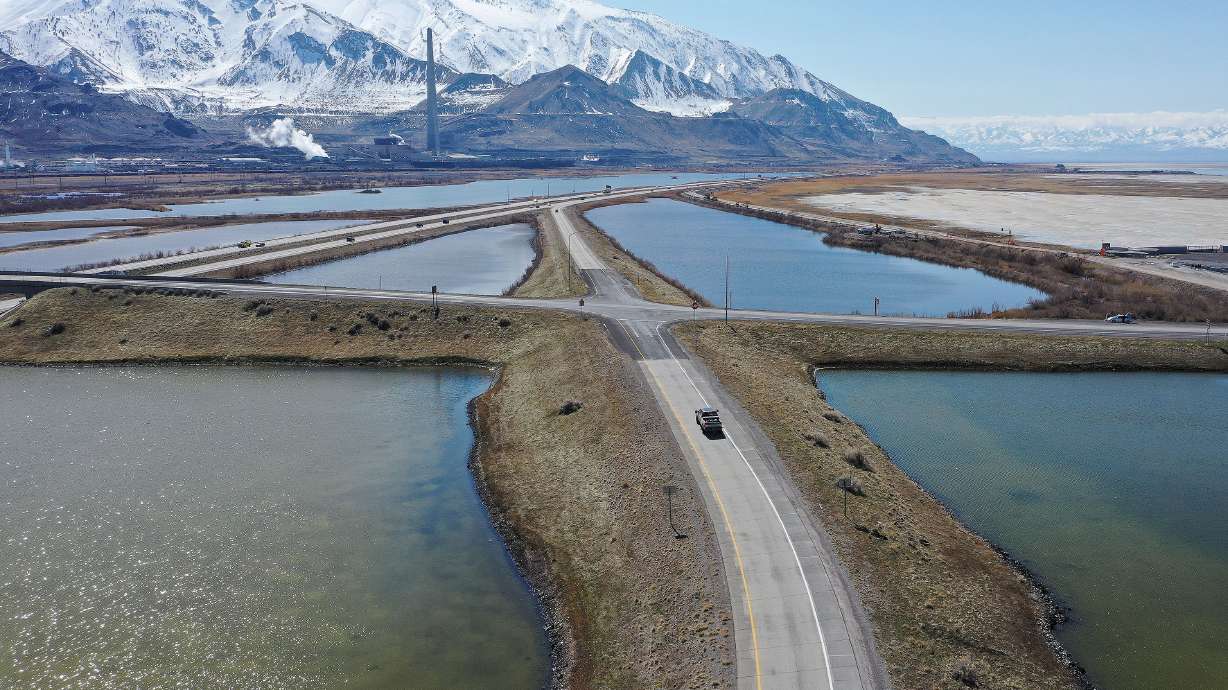Estimated read time: 4-5 minutes
This archived news story is available only for your personal, non-commercial use. Information in the story may be outdated or superseded by additional information. Reading or replaying the story in its archived form does not constitute a republication of the story.
SALT LAKE CITY — While drought conditions remain in Utah, no parts of the state are listed in extreme drought for the first time in nearly three years, according to a new report issued by the U.S. Drought Monitor.
The monitor, a joint effort between the National Drought Mitigation Center at the University of Nebraska and federal departments, lists about 64% of the state in either moderate or severe drought, while a little more than a quarter of the state is now listed as "abnormally dry." The amount of land not listed under any form of drought is now up to 7.3%, as storms continue to pummel the West.
"Widespread improvements were made to the drought depiction, especially in northern California, northern Nevada, southern Idaho and Utah, with scattered changes, mostly improvements, also taking place in other western states," National Drought Mitigation Center climatologist Curtis Riganti wrote in the report, about the ongoing precipitation.
It's a major win for Utah as it slowly rebounds from an ongoing drought that first emerged in southern Utah months after a prolific snow season in 2019. The drought became a statewide issue a year later when a culmination of below-normal precipitation and above-average temperatures emerged during Utah's driest year since at least 1895.
How bad the drought got
Parts of the state entered extreme drought status in June 2020, according to U.S. Drought Monitor data. It only worsened from there. Extreme drought — the monitor's second-worst category — had consumed more than 80% of the state by the end of the summer.
Below-normal snowpacks during the 2021 and 2022 water years kept the severe drought going. At least 90% of Utah was in extreme drought, including more than half that has been in exceptional drought, the worst status, by the end of March 2021.
The amount in exceptional drought rose to about two-thirds of the state by the start of the summer in 2021 — the worst it got in the past few years.
A change in fortunes
About 95% of the state remained in at least severe drought, including at least 56% in extreme drought when the water year began on Oct. 1, 2022. Then came the storms. Dozens of feet of snow have fallen in the mountains since mid-October, helping ski resorts and the statewide snowpack break records in the past week.
Utah's statewide snowpack jumped to 27.5 inches of water by Thursday morning, 1.5 inches higher than the previous record set in 1983 and 3.4 inches higher than the statewide snowpack collection of the 2021 and 2022 seasons combined. That number is expected to continue to climb as more storms impact the state.
It's not only mountain snow. National Centers for Environmental Information data, which tracks a series of National Weather Service sites in mountains and valleys across the state, notes that 2023 is on track to be Utah's 13th-wettest water year on record, based on information updated through the end of February.

The moisture has severely weakened the drought to the point that no parts of the state remain in extreme drought.
Not over yet
Utah's reservoirs are currently rebounding at the same time that current drought conditions are slowly weakening. The system is now up to 56% capacity after starting the water year at 42.5% full, according to Utah Division of Water Resources data. Cities and counties all over Utah have used the wet weather over the past few months to help restore underground aquifers, too.
While Thursday's update is welcome, experts warn that the drought and its resulting extensive impacts aren't over just yet.
"We've come a long way but there's still a ways to go to become more drought resilient as a state," water resources officials tweeted Thursday, in reaction to the latest drought report. "Your conservation efforts play a huge role in that."
Candice Hasenyager, the division's director, has echoed that message throughout the winter.
In a statement earlier this month, she said that taking steps to be more drought-resilient is the best way for Utah "to take full advantage" of the winter's storms. That includes finding ways to reduce as much water use as possible so that the water gained this winter can linger in the system longer for the next time extreme drought conditions return.









